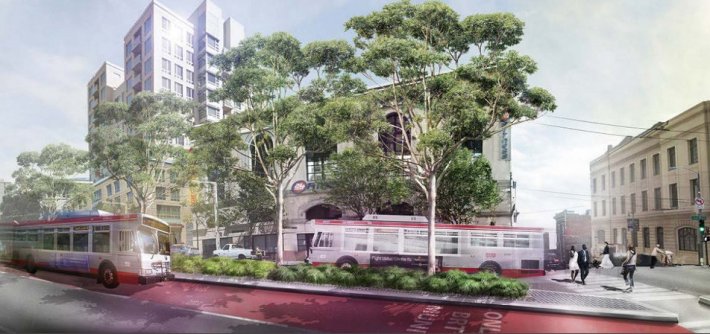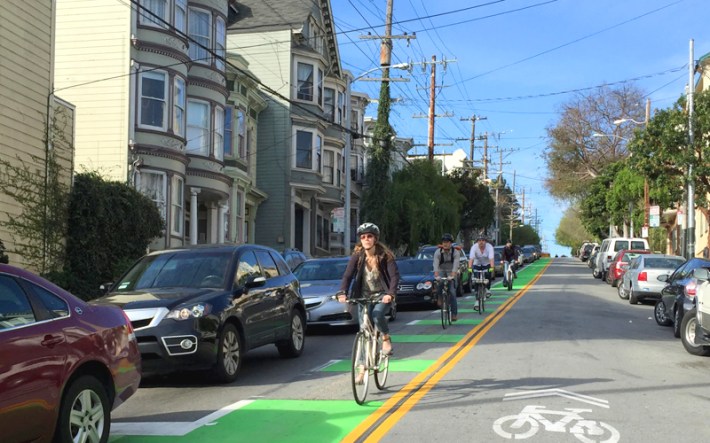
Late last week, the San Francisco Planning Commission unanimously adopted a resolution to replace "Level of Service" (LOS) with "Vehicle Miles Traveled" (VMT). That's bureaucratese for measuring a project's overall effect on moving people, instead of just counting automobiles. As explained in a previous post, environmental law has long forced transportation planners to grade projects by how they impact traffic flow. "This will streamline California Environmental Quality Act (CEQA) review for projects that are designed to encourage public transit, promote pedestrian safety and help reduce the need for traveling long distances by car," said John Rahaim, Director of San Francisco Planning, in an official release. "We are pleased to be the first city in California to adopt these new guidelines."
LOS often jammed up projects such as bike and transit lanes, which--arguably--reduce the number of cars that flow through a given area by taking lane space, but increase the number of people who can get from A to B. In short, the new rules, in the process of being adopted at the state level, make it so something as benign as a bike lane doesn't trigger an expensive and time consuming environmental review.
"This is exciting news for public transit in San Francisco. VMT is not only a better metric for assessing overall environmental impact of our streets, but it also clears the way to waste less time and money implementing great Transit First projects," said Reed Martin, a member of the Executive Board of the San Francisco Transit Riders Union. "Van Ness BRT took an extra six years and almost $8 million just to study traffic impacts based on the car-biased LOS metric.
This will go a long way towards "speeding up critically needed street projects to achieve Vision Zero, increasing our public resources by decreasing the time and staff needed for environmental review processes, and ensuring California’s goals to reduce greenhouse gas emissions and prioritize biking, walking, and transit as sustainable modes of transportation are met," said Margaret McCarthy Interim Executive Director of the San Francisco Bicycle Coalition.

Not only was the "Level of Service" criteria counterproductive in its own right, it formed the basis for anti-bike crusaders to sue the city. Back in 2008, they used LOS and California environmental law to force the production of over a thousand pages of environmental documents and reviews to prove that bike lanes are good for the environment.
"San Francisco stands with the State Office of Planning and Research in embracing this forward-thinking approach to environmental review,” said SF Supervisor Scott Wiener in a release from the Planning Department. He is Chair of the San Francisco County Transportation Authority, which serves as the county Congestion Management Agency and leads environmental review of major projects like the Doyle Drive redesign and the Van Ness and Geary BRT projects. “I applaud the Planning Department for its action and look forward to the Transportation Authority’s use of the new VMT ... aligning San Francisco’s CEQA practices with our city’s overall environmental, transportation, and development policy goals.”
"If VMT had been the metric in place when voters passed Proposition K in 2003, San Franciscans could have spent the better part of the last decade riding BRT on Van Ness; instead, we're still waiting," said Martin. "The San Francisco Transit Riders are looking forward to seeing this critical shift to VMT expedite the expansion of the rapid network across the city."




